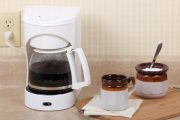(BPT) – A clean house always looks and feels good. But did you know a clean environment goes a long way toward keeping you and your family healthy?
For starters, dust holds dander and pollen, which explains why dust so easily triggers an allergy attack. But common household dust contains other bad stuff you just wouldn’t want to breathe in, such as 45 kinds of toxic chemicals used in consumer products, according to a study by George Washington University. Exposure to these chemicals is linked to cancer, hormone changes, developmental problems and more.
“This does sound quite alarming, but it underlines the importance of maintaining your home’s indoor air quality,” says Tom Tasker, Product Manager, Luxaire heating and cooling. “The good news is all it takes is a few simple things to minimize the dust, dirt and other air-choking particles in your home environment.”
So breathe easy at home with these tips from Luxaire, and almost instantly, you and your family can improve your home’s indoor air quality.
* Weekly vacuuming and mopping is one effective way to reduce the amount of nasal-irritating dust that settles on the floors throughout your home. In high-traffic areas, you may want to vacuum or mop more often. Don’t forget to push beds and other furniture out from the walls so you can collect those dust bunnies as well.
* While dust on hard furniture is easy to see and remove, remember that it also settles on furniture and upholstery. That’s why it’s important to get out the vacuum’s brush attachments every month or so and suction it out of the fabric.
* Turning on your HVAC fan before vacuuming can improve indoor air quality even more. Vacuuming is great at removing dirt and dust that’s directly under the cleaner, but the moving air also stirs up other dust and dirt particles that can later resettle on furniture and other just-cleaned surfaces. The airflow created by the HVAC fan can pull these particles out of your rooms and trap them in the filter.
* Checking your HVAC’s filter on a regular basis is always good practice. But the next time you shop for a replacement filter, be mindful of its MERV rating (Minimum Efficiency Reporting Value). Filters with a higher rating can catch smaller dust particles and other contaminants, keeping them out of your breathing space.
* Make sure fireplaces and wood-burning stoves are properly vented to the outside, away from windows and any heating and air conditioning intakes. This keeps fumes and other unwanted particles from re-entering your home’s HVAC system.
* Minimize the amount of unwanted outdoor particles from coming in so you can keep your airways clear and, hopefully, cut back on vacuuming and dusting. Keep windows closed on windy days, and encourage family and guests to leave their shoes at the door. (For those who feel adverse to going barefoot, keep a bin of inexpensive slippers in many sizes at the ready.)
* Keep humidity at a healthy level. An overly humid home can create the perfect environment for mold and other allergens to thrive, which can make the indoor air extra irritating for allergy sufferers. Invest in a humidity meter and make sure the levels stay within a comfortable, healthy range of 30 to 50 percent humidity.
* Make sure dryer and bathroom fans are venting directly outside. When it’s time to replace these, opt for quiet, energy-efficient models, because they’ll keep things quiet while improving your air quality.
Making the indoor air quality in your home healthy and comfortable always starts with a high quality and well-maintained HVAC system, says Tasker. At the same time, following these tips to manage dust, fumes and other contaminants to your breathing space will let your HVAC system work much more efficiently and effectively. To learn more, visit Luxaire.com.


